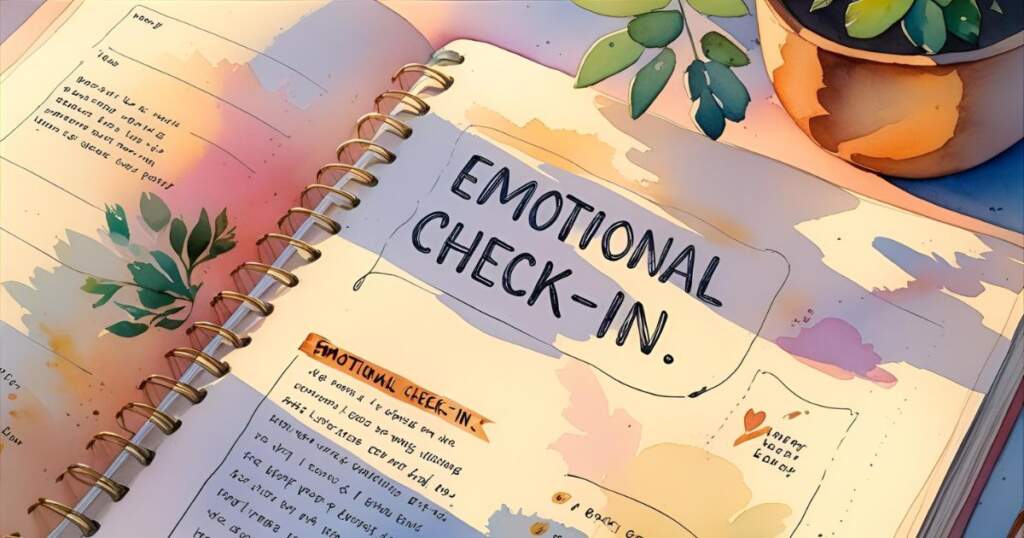Healthy Boundaries Aren’t About Building Moats

When you hear the term healthy boundaries, you might imagine shutting people out, putting up walls, or saying “no” with a side of icy detachment. But here’s the truth: boundaries aren’t barriers—they’re agreements. They’re the invisible lines that keep your energy, time, and heart safe so you can actually show up fully.
Think of healthy boundaries like a cozy fence around your garden—just enough to keep the weeds out, while letting the sun and fresh air in.
Why People Struggle with Healthy Boundaries
Even when we know healthy boundaries are important, actually setting them can trigger guilt, fear, or a worry that we’ll lose people we care about. Common reasons we resist setting healthy boundaries include:
- People-pleasing habits (saying yes to avoid conflict)
- Fear of rejection (worrying boundaries will push people away)
- Cultural and family norms that equate self-sacrifice with love
- Past experiences where boundaries were ignored or punished
6 Types of Healthy Boundaries (and How to Set Them with Kindness)
1. Emotional Healthy Boundaries

These protect your feelings and mental space.
- Example: “I can’t be your only source of support right now.”
- Why it matters: Without emotional healthy boundaries, you risk burnout from carrying other people’s emotional load.
- Try this affirmation: My empathy matters, but so does my emotional well-being.
When you set emotional healthy boundaries, you’re deciding how much of other people’s feelings you can hold without drowning in them. This doesn’t mean you stop caring—it means you stop carrying everything. For example, if a friend vents to you every night, it’s okay to say, “I’m here for you, but I need to rest tonight—let’s talk tomorrow.” This keeps your compassion intact while preventing resentment from building. Emotional healthy boundaries allow you to be a safe space for others and for yourself.
2. Time Healthy Boundaries
Your hours are not an infinite resource.
- Example: “I’m not available for calls after 8 PM.”
- Why it matters: Without time healthy boundaries, you overcommit and under-rest.
- Try this affirmation: I protect my time so I can show up as my best self.
Your time is a non-renewable resource, and every “yes” to one thing is a “no” to something else—often your own needs. Time healthy boundaries can look like scheduling buffer days with no social plans, setting work cut-off hours, or declining last-minute invites without over-apologizing. Protecting your time isn’t selfish; it’s how you ensure the commitments you do take on get the best version of you. A full calendar doesn’t equal a full life—intentional space does.
3. Physical Healthy Boundaries
This includes your personal space and physical needs.
- Example: “I’m not comfortable hugging right now.”
- Why it matters: Physical healthy boundaries protect your comfort, consent, and safety.
- Try this affirmation: I have the right to decide what feels safe for my body.
Physical healthy boundaries are about honoring your body’s comfort and needs without feeling like you have to justify them. This can be as simple as choosing a seat where you feel at ease, saying no to hugs, or asking for personal space in crowded situations. It can also mean taking breaks to stretch, hydrate, or eat during long work sessions. You don’t owe physical access to anyone, and your comfort level is reason enough to adjust a situation to feel safe.
4. Work & Career Healthy Boundaries

Your value isn’t measured by your availability.
- Example: “I’m unavailable to take on extra projects without adjusting my current workload.”
- Why it matters: Healthy boundaries at work protect you from exploitation and burnout.
- Try this affirmation: I can succeed without sacrificing my health.
Work healthy boundaries prevent your career from consuming your identity. This can mean clarifying roles and responsibilities with your boss, negotiating deadlines, or simply logging off when your workday ends. Boundaries here are often the difference between sustainable success and slow burnout. When you protect your work-life balance, you’re actually protecting your creativity, productivity, and long-term ambition. Remember: your job benefits more from a well-rested you than an overextended one.
5. Digital Healthy Boundaries

Screens can be 24/7 portals unless you close them.
- Example: “I don’t answer emails over the weekend.”
- Why it matters: Digital healthy boundaries help prevent constant mental stimulation and stress.
- Try this affirmation: I am allowed to unplug without guilt.
Our devices are incredible tools—but without digital healthy boundaries, they become constant stress pipelines. Setting app timers, muting notifications after certain hours, or creating a “no phones at the table” rule can help you reclaim focus and presence. Digital boundaries also mean you decide when and how you engage online—no one gets 24/7 access to you unless you choose it. Your mental clarity often starts with curating your digital space.
6. Energy Healthy Boundaries
These help you decide where and with whom you invest your attention.
- Example: “I can’t attend, but I hope it’s a great event.”
- Why it matters: Without energy healthy boundaries, you risk spreading yourself too thin.
- Try this affirmation: My energy is valuable, and I use it wisely.
Energy healthy boundaries are about knowing that not every opportunity, conversation, or crisis deserves your immediate investment. Saying “no” to events that don’t light you up, leaving draining group chats, or skipping a debate you don’t have the bandwidth for are all valid. Think of your energy like currency—spend it where the return is joy, growth, or peace. Protecting your energy ensures you have enough of it for what truly matters.
How to Set Healthy Boundaries Without Feeling Mean
The difference between healthy boundaries and brick walls comes down to tone and intent.
Tips for kind but clear delivery:
- Use “I” statements instead of blame: “I need more time” vs. “You’re too demanding.”
- Pair the no with an alternative: “I can’t meet tonight, but I’m free this weekend.”
- Keep it short—over-explaining can open the door for negotiation you don’t want.
When Healthy Boundaries Feel Uncomfortable
Setting healthy boundaries can stir up discomfort, especially if you’re used to putting others first. That doesn’t mean you’re wrong—it means you’re growing.
Ways to stay grounded:
- Breathe before responding to requests.
- Write down your “non-negotiables” and revisit them often.
- Remind yourself: boundaries protect relationships—they don’t ruin them.
Final Thoughts

Healthy boundaries are not about shutting out the world—they create room for you to thrive. And when you fill that space with self-compassion, the effect is even stronger—start here with affirmations for self-love you’ll actually believe.
Healthy boundaries are fences with gates, not locked doors. When you set them with clarity and kindness, you’re not pushing people away—you’re inviting them to meet you where respect and love can flourish.










